The demand for lightweight fishing kayaks has surged due to anglers' desire to explore diverse environments and access remote bodies of water. These versatile, portable craft enable users to easily transport, store, and maneuver their kayaks, enhancing exploration and fishing experiences. Key materials like nylon, polyester, fiberglass, and carbon fiber ensure durability without sacrificing weight. Top brands like NRS and Perception lead the way with innovative designs, setting industry standards. Proper care and maintenance extend kayak lifespans. Lightweight fishing kayaks have revolutionized access to remote waters, fostering deeper connections with nature, while emphasizing safety through strategic design elements for stability and maneuverability. Future developments in materials science promise even lighter, more compact models without compromising performance.
“Unleash your adventurous spirit with the ultimate guide to lightweight fishing kayaks—a game-changer for water enthusiasts. In today’s digital era, folks seek portable options without compromising performance. This article explores why a lightweight design is a must-have for anglers, offering benefits like ease of transport and enhanced maneuverability. We’ll navigate through materials, brand innovations, care tips, and real-world stories, ensuring you’re equipped with the knowledge to choose the perfect kayak. From safety considerations to the future of water sports, discover why portability is the new norm in fishing.”
Understanding the Need for Lightweight Fishing Kayaks
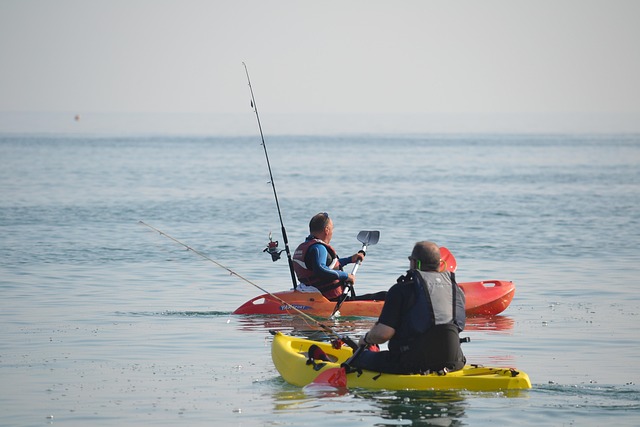
In today’s outdoor recreation landscape, the demand for versatile and portable equipment has skyrocketed, especially among fishing enthusiasts. This shift towards lightweight fishing gear is driven by a growing need to navigate diverse environments and access hard-to-reach bodies of water. Traditional, heavy fishing kayaks often prove cumbersome when transporting and storing, limiting their appeal for weekend warriors and avid anglers alike.
Lightweight fishing kayaks offer a practical solution, providing users with the freedom to easily carry and maneuver their craft. This portability enables anglers to explore new waterways, fish from pristine shores, and access remote areas previously unreachable by conventional kayaks. The compact design also facilitates storage in smaller spaces or during travel, making them ideal for those who value convenience and adaptability in their outdoor adventures.
Benefits of a Lightweight Design in Kayaking

A lightweight design offers numerous advantages for kayakers, especially those who enjoy the sport and recreation aspects, like fishing kayaks. The primary benefit is improved portability, making it easier to transport your kayak to and from water bodies. This is particularly useful when exploring different rivers, lakes, or coastal areas, as you can carry your kayak over various terrains without straining your muscles.
Lightweight kayaks are also ideal for solo paddlers or those with limited storage space. They take up less room, ensuring you have more space in your vehicle or garage. This design feature also makes it simpler to load and unload the kayak onto a roof rack, making car camping trips more accessible. Additionally, reduced weight translates to better maneuverability, allowing kayakers to navigate tight spaces and perform intricate moves with greater ease while enjoying activities like fishing kayak adventures.
Materials Used for Maximum Portability
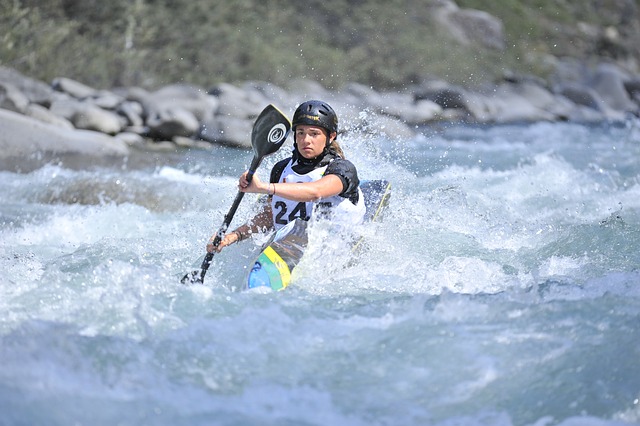
When it comes to lightweight fishing kayaks, the materials used play a pivotal role in achieving maximum portability. Modern manufacturers often turn to innovative and durable synthetic fabrics, such as nylon or polyester, for their superior strength-to-weight ratio. These materials are not only incredibly light but also highly resistant to tears and wear, ensuring your kayak can withstand the rigors of outdoor adventures.
Compared to traditional materials like fiberglass or plastic, synthetic fabrics offer a lighter alternative without compromising structural integrity. Their flexibility allows for easier packing and transport, making them ideal for anglers who frequently move their kayaks between locations. This feature is particularly beneficial for fishing enthusiasts who explore various bodies of water, ensuring their kayak remains a convenient and portable companion on all their trips.
How to Choose the Right Lightweight Kayak for Your Needs

When selecting a lightweight kayak, consider your intended use. If you’re an avid angler, a fishing kayak designed with rod holders and storage compartments will be your best friend. These kayaks are often made from durable yet lightweight materials like fiberglass or carbon fiber to support casting and maneuvering while keeping overall weight down.
Size also plays a crucial role in ease of transport. Smaller, narrower kayaks are generally lighter and more portable, making them ideal for weekend trips or exploring shallow waters. Ensure the kayak’s dimensions align with your vehicle’s cargo space and your personal carrying capacity for optimal convenience during transport and storage.
Popular Brands and Their Innovative Lightweight Solutions
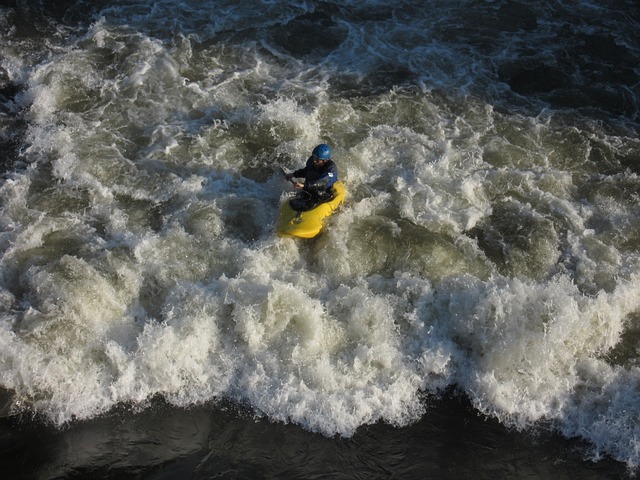
Some of the most popular brands in the outdoor gear industry have embraced lightweight materials and designs to create innovative solutions for enthusiasts, especially those who love fishing kayaks. For instance, companies like NRS (Northwest River Supplies) have pioneered the use of advanced composite materials that reduce the weight of their kayak models without compromising strength or durability. This allows kayakers to portage their boats more easily, enhancing the overall experience.
Another notable brand, Perception, has gained a reputation for producing fishing kayaks that are both lightweight and highly maneuverable. Their use of proprietary materials and precision engineering ensures these kayaks are not only easy to carry but also perform exceptionally well on the water. These brands continue to set industry standards, influencing other manufacturers to adopt similar sustainable practices in their quest for portability without sacrificing performance.
Care and Maintenance Tips for prolonging your Kayak's Lifespan

Proper care and maintenance are essential for extending the lifespan of your fishing kayak, ensuring it remains in top condition for years to come. Start by regularly cleaning your kayak with fresh water to remove any salt residue, especially if you’ve been paddling in saltwater environments. Avoid using harsh detergents or abrasive materials that could damage the hull. After each use, gently wipe down the deck and ensure all equipment, such as rods and anchors, are securely stored.
Consider investing in a protective cover tailored for your fishing kayak. This will shield it from direct sunlight, extreme weather conditions, and debris, reducing the need for frequent repairs. Additionally, periodically inspect the kayak’s hardware, including fastening points and carry handles, for any signs of wear or corrosion. Lubricate these parts as needed to maintain their functionality. Remember, a well-maintained fishing kayak will not only perform better but also provide a more enjoyable paddling experience.
Real-world Use Cases: Stories from Fishing Enthusiasts

Fishing enthusiasts have long sought equipment that balances performance with portability, and lightweight fishing kayaks are no exception. These innovative designs allow anglers to access remote locations previously unreachable, opening up a world of untapped fishing grounds. Whether it’s a day trip to a secluded pond or an overnight expedition on a river, these kayaks offer the ultimate in mobility without sacrificing stability and capacity.
Real-world stories from fishing enthusiasts highlight the impact of lightweight kayaks. Many share tales of solo adventures where they can easily portage their kayak through dense forests, climb steep banks, and launch into pristine waters—all with minimal effort. This freedom has not only enhanced their fishing experiences but also encouraged exploration, fostering a deeper connection with nature.
Safety Considerations with Lightweight Kayaks
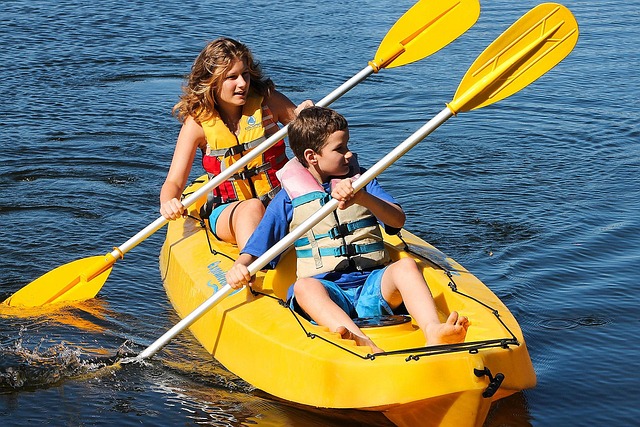
When it comes to lightweight kayaks, safety should never be compromised for portability. These compact boats are designed to be easy to transport and store, making them popular choices for fishing kayak enthusiasts who enjoy accessing remote bodies of water. However, their reduced weight often means a trade-off in stability and maneuverability, which can pose risks when navigating choppy waters or handling sharp turns.
To ensure a safe paddling experience, lightweight kayakers should prioritize proper fitting and equipment. Using a PFD (Personal Flotation Device) designed for the specific size and weight of the kayak and wearer is crucial. Additionally, selecting a design with adequate buoyant material distribution can significantly improve stability, especially in wider models tailored to fishing gear and accessories.
The Future of Portability in Water Sports
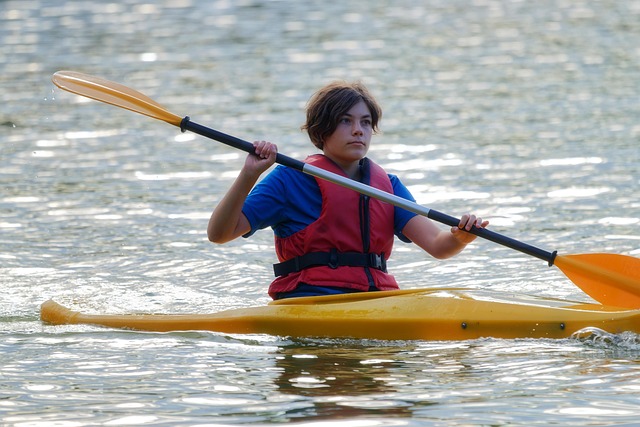
The future of portability in water sports is set to be transformed by innovative designs, particularly in equipment like the fishing kayak. Manufacturers are constantly seeking ways to make these versatile vessels lighter and more compact without compromising their performance. This trend aligns with the growing demand for outdoor activities that offer both accessibility and convenience.
With advancements in materials science, we can expect to see even more lightweight yet robust fishing kayaks enter the market. These designs will enable easier transport, allowing enthusiasts to access remote locations and explore a wider range of water bodies. Portability will be enhanced without sacrificing the stability and maneuverability crucial for successful fishing expeditions, ensuring that the sport remains enjoyable and accessible for years to come.
